When you start to dabble in Home Energy Monitoring with local control, you often come across various ESP32 based DIY projects or expensive brand solutions like the Emporia Vue Energy Monitoring System. This Emporia is highly regarded within the community, but it does involve disassembling and flashing the device with a custom firmware like ESPHome.
A while back I reviewed an interesting single clamp energy meter bought dirt cheap from AliExpress, the Tuya Zigbee Single Phase Power Metering Module. I mentioned in that review I was waiting on the full house energy metering version sold by the same company, the Tuya 3-Phase Energy Meter PC321-Z-TY.
This device is Zigbee based instead of Wi-Fi, has 3 clamps that you attach to your main phases and an antenna for better communication. I bought it from the same store on AliExpress for $77, but it’s also floating around Amazon. I’m going to disassemble the device, talk about it’s features and of course integrate it locally in Home Assistant.
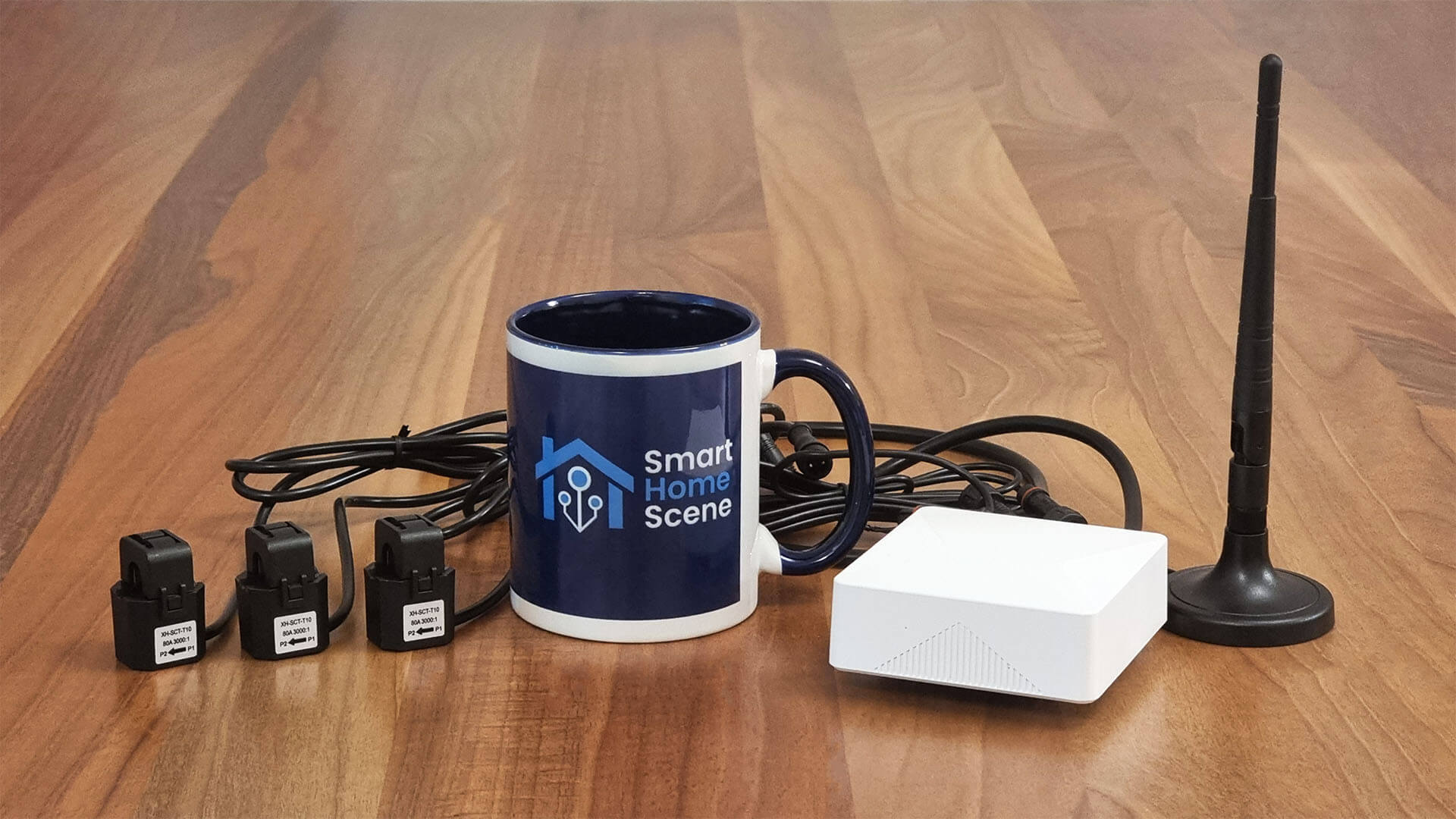
Who is this device for?
If you are wondering if this is for you:
- If you are looking to monitor your total home energy consumption
- If you are looking for a local energy monitor
- If you are looking for something that works out-of-the-box and doesn’t need flashing
- If you have 3 main phases coming from the grid to your home
- If you have a single phase installation, you can still use this device, see wiring section
- If you want to monitor an industrial production plant, you can buy it with clamps of up to 500A
Technical Specification
- Model: PC321-Z-TY
- Connectivity: Zigbee 3.0
- External Antenna Output: 20dBm
- Clamp Diameter:
- 80A – up to 10mm wire diameter
- 120A – up to 16mm wire diameter
- 200A – up to 20mm wire diameter
- 300A – up to 24mm wire diameter
- 500A – up to 36mm wire diameter
- Metering Accuracy: ≤100w within ± 2W
- Reporting Interval: Every 5 Seconds
- Operating Voltage: 100-240 VAC 50/60Hz
- Operating Temperature: -20°C-55°C
- Operating Humidity: ≤90RH
- Dimensions: 86x86x37mm
- Where To Buy: $85 AliExpress | $85 Amazon
Disassembly
The Tuya Zigbee 3-Phase Clamp Energy Meter came in a package containing the device itself, an external antenna for better connectivity, a manual, a mounting bracket, some screws and 3 clamps of your choice, in my case 80A each. The power cables were preconnected to the device, all that remained was to screw in the antenna and the clamps.
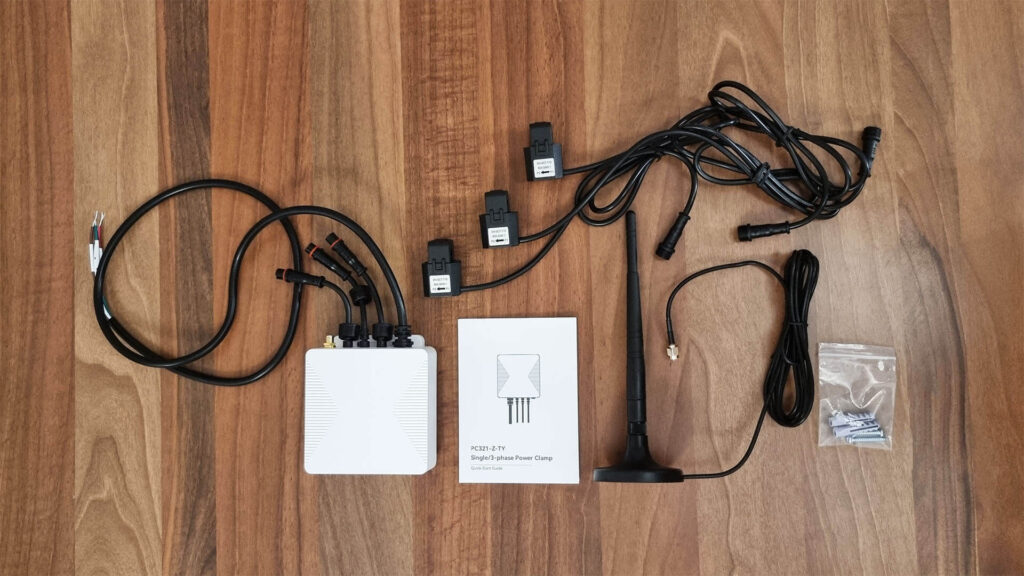
The 80A clamps I ordered were labelled as model XH-SCT-T10 and are almost identical to the single clamp module version. One important difference though, is that these have the direction of current clearly labelled, so you don’t mess up and clamp them wrong. The current will be displayed negatively or not at all if you do.
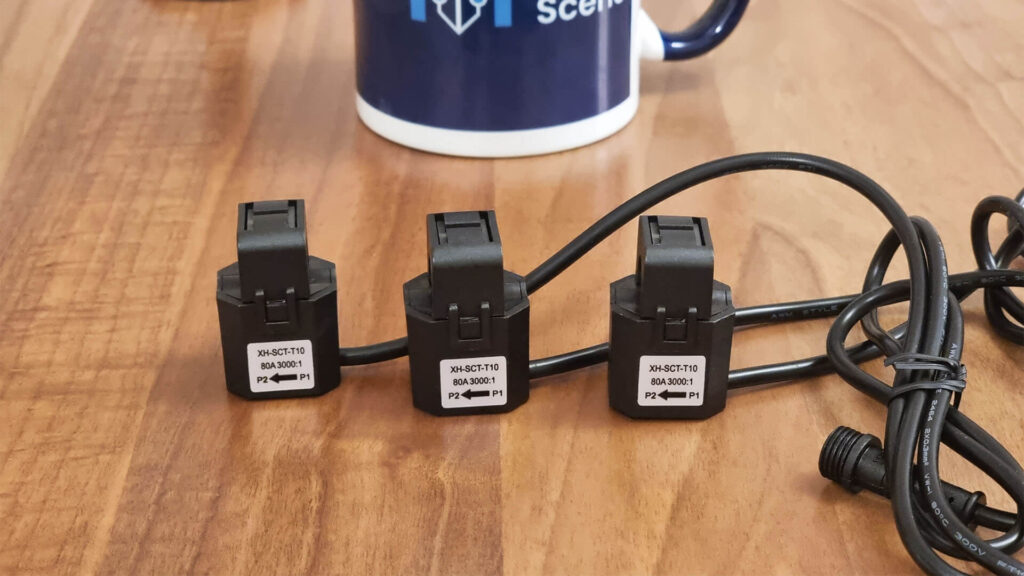
The external antenna is just a generic 2.4GHz antenna with a 20dBm power output. Depending on your installation, circuit breaker boxes can contain a bunch of different things so interference is a possibility. The antenna has a 1m long cable which allows you to mount it outside of the breaker box and eliminate potential issues.
The base of the antenna is also a magnet, which is handy when choosing a mounting location.
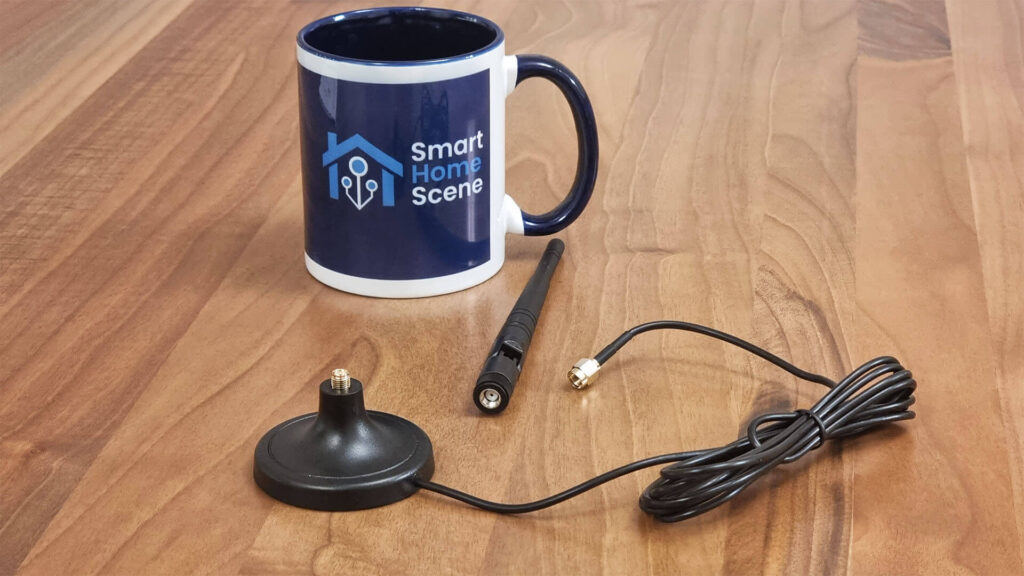
The device itself is not very large, but it is heavy and compact. The mounting bracket slides in and out of place on the back, so you can remove it easily if needed without unscrewing the whole thing. Underneath the mounting bracket is where you find the pairing button.
When initially turned on, the device is automatically in pairing mode. But if you need to repair the device, you need to hold this button for ~5 seconds until a very dim red LED starts blinking on the top case.
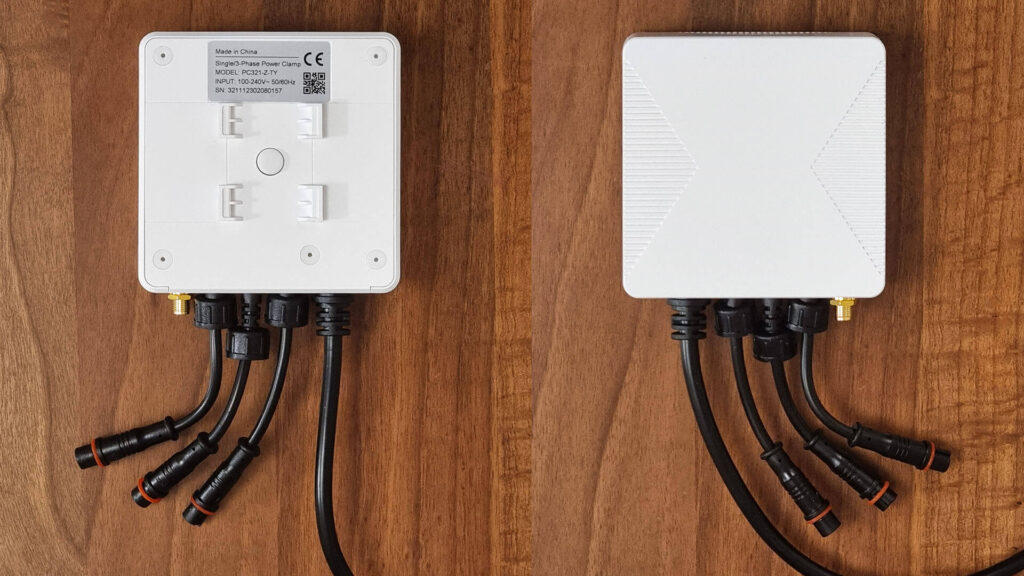
The clamp connectors are clearly labelled on the back of the case as L1/A, L2/B and L3/C. This is purely anecdotal, as there are no actual differences between the connectors. Each phase will be identified in Home Assistant at the order you have used the clamps.
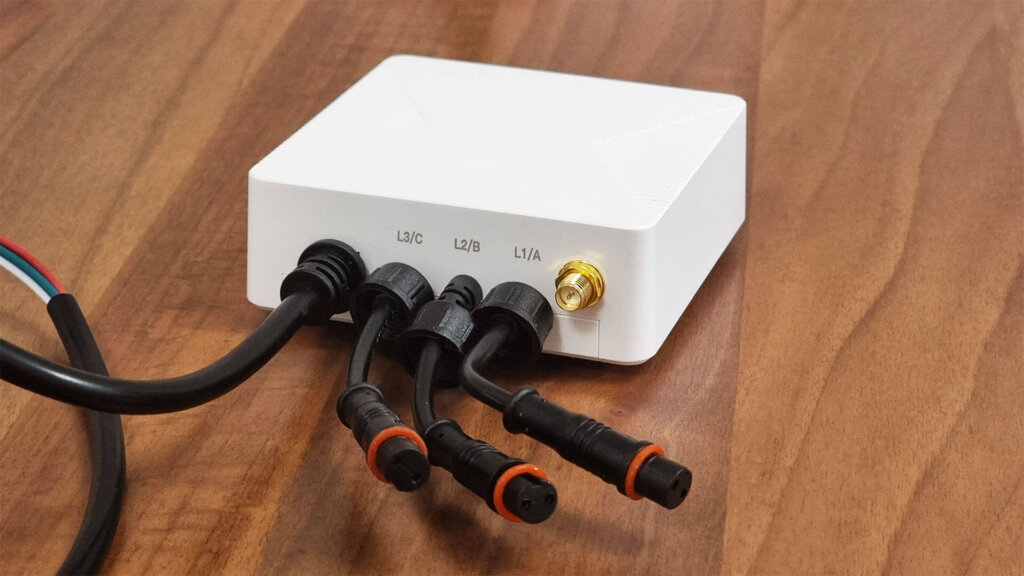
Opening up the device, you see a neatly laid out PCB containing the Energy Metering IC. This is the brains of this energy monitor, model ATT7022EU [Datasheet] manufactured by a company called HiTrend Tech from Shanghai. Each clamp is slotted underneath the PCB with a separate 2-pin JST connector, just like the 3-Phase cable used to power this device. Please remember, neutral is required.
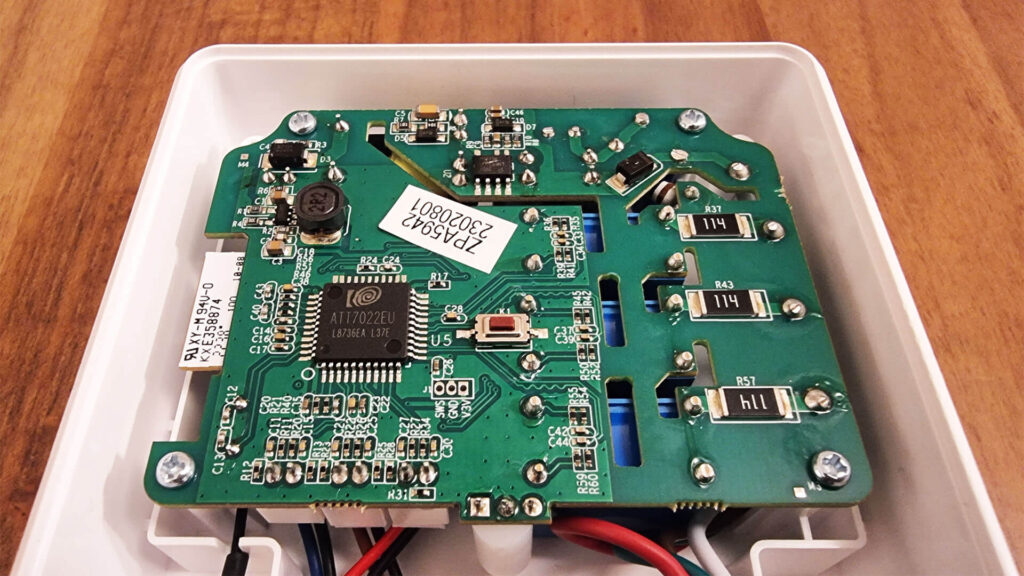
Removing the PCB from the case reveals a few things. The first thing you notice is the 3 separate voltage transformers, labelled model DL-PT202EA. There are also known as miniature precision voltage transformers and are used to step down the voltage coming from each phase, as it is not actually needed for a low-power device of this type.
Zigbee communication is handled by Tuya developed ZTU-IPEX [Datasheet] module with a low-power 32-bit CPU, 1024-KB flash memory, 64-KB RAM, and rich peripheral resources.
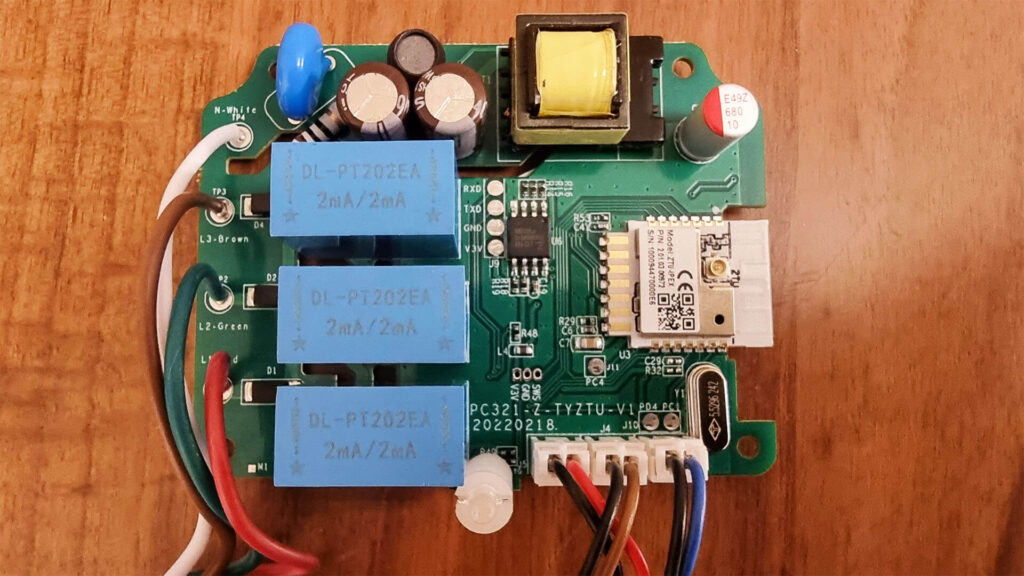
Installation
Installing this device can prove to be a challenge for most people, as it involved handling live wires inside a breaker box. If you are unsure in your capability to wire this device, hire a certified electrician. A few important bullet points about the wiring of the device:
- You don’t have to clamp the meter on the three main phases going into your home, you can measure energy consumption on any phase you wish
- You don’t have to clamp all three phases, you can leave one or two unclamped and the device will still report correctly
- You don’t have to connect each phase individually to the device, but doing so will give you the most accurate measurements
To make things more clear, here is the official wiring diagram from the manufacturer:
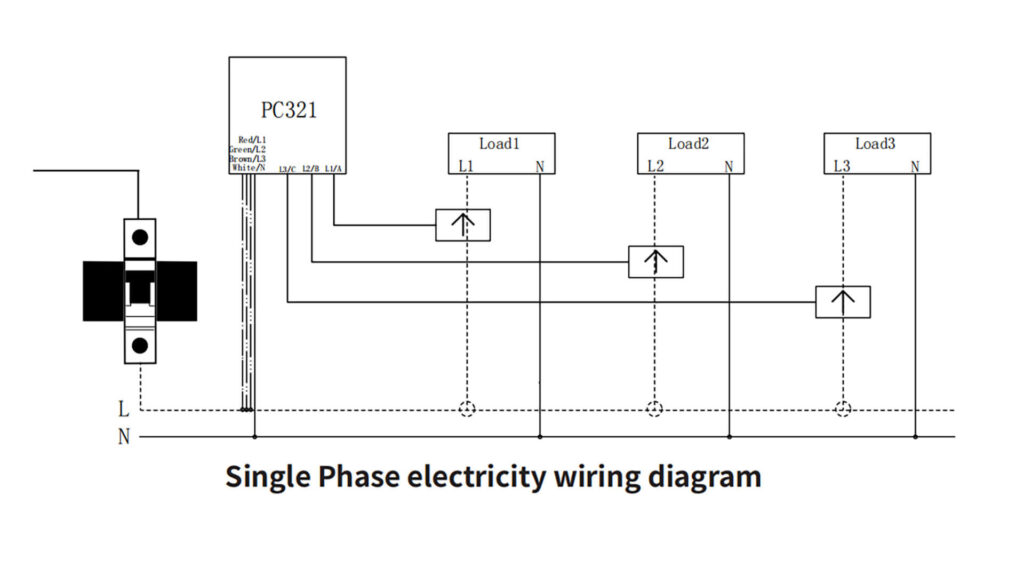
If you wire the device like in Diagram 1, the device will obtain the voltage reading from only one phase. Meaning, the measurement will be identical across all three voltage entities. This will in turn, affect the calculation of the power entity, which is P=VxI. For illustration, let’s assume you are getting the following measurements with a power factor of 1:
- Voltage V
- Voltage_A = 230.5v
- Voltage_B = 230.5v
- Voltage_C = 230.5v
- Current I
- Current_A = 0.484A
- Current_B = 0.758A
- Current_C = 0.652A
- Power P
- Power_A = Voltage_A x Current_A = 230.5V x 0.484A = 111.5W
- Power_B = Voltage_B x Current_B = 230.5V x 0.758A = 174.7W
- Power_C = Voltage_C x Current_C = 230.5V x 0.652A = 150.3W
Even though the calculation is correct, the initial voltage is taken from only 1 phase, which will not correspond to the 3-phases you are clamping. Depending on the stability of your grid, this has the potential to skew the actual readings of the device. The correct way to do it is Diagram 2:
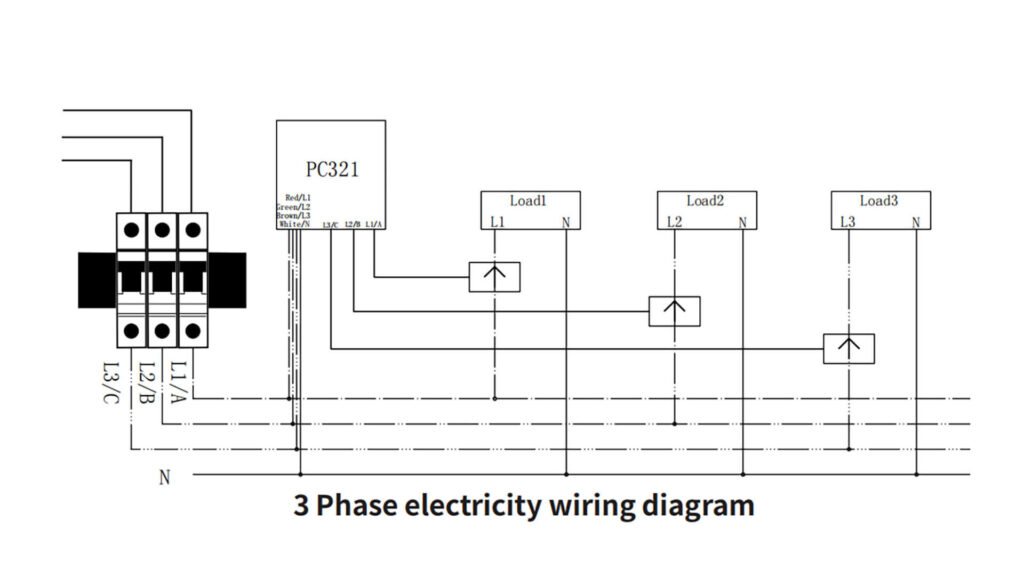
Here, each individual phase is connected separately and the device will be reading the correct voltage for each phase you are clamping. To expand on the previous example:
- Voltage V
- Voltage_A = 232.9v
- Voltage_B = 233.1v
- Voltage_C = 230.5v
- Current I
- Current_A = 0.484A
- Current_B = 0.758A
- Current_C = 0.652A
- Power P
- Power_A = Voltage_A x Current_A = 232.9V x 0.484A = 112.7W
- Power_B = Voltage_B x Current_B = 233.1V x 0.758A = 176.7W
- Power_C = Voltage_C x Current_C = 230.5V x 0.652A = 150.3W
You can see the actual power readings are a bit different, providing an average offset of about 1.1%. To get the most accurate measurement, you will have to wire the device like in diagram 2: 3-Phase wiring.
Home Assistant Integration
The Tuya Zigbee Home Energy Meter with 3-Phases PC321-Z-TY is officially supported only in Zigbee2MQTT. A custom quirk can be developed for ZHA, but it involves some serious tinkering to get each datapoint exposed to Home Assistant. I suggest you use this with Zigbee2MQTT and not bother with ZHA at all.
Zigbee2MQTT
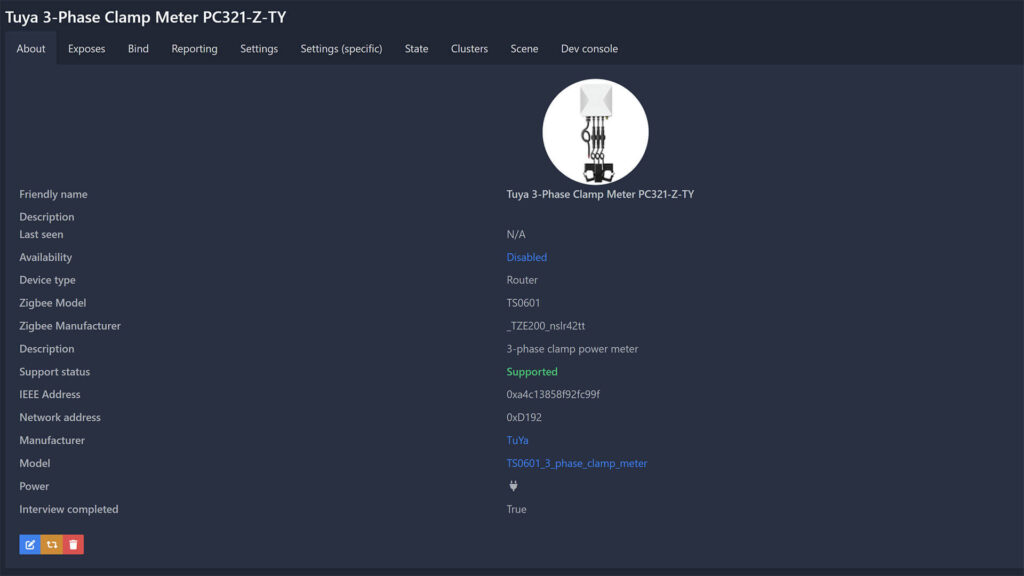
Once paired to Zigbee2MQTT, the device is identified as model TS0601_3_phase_clamp_meter by manufacturer _TZE200_nslr42tt. The device is capable of relaying Zigbee traffic as well, being correctly labelled as a router. It’s important to note there are two versions of this device:
- Owon PC321-Z (Older version)
- Tuya PC321-Z-TY (Newer version, talked about in this review)
- Tuya PC321-TY (Wi-Fi version, not relevant)
Even though both versions are supported in Zigbee2MQTT, this review is based on the newer Tuya version, which is reported as better by some users in the development threads. Once successfully paired, it exposes the following entities to Home Assistant:
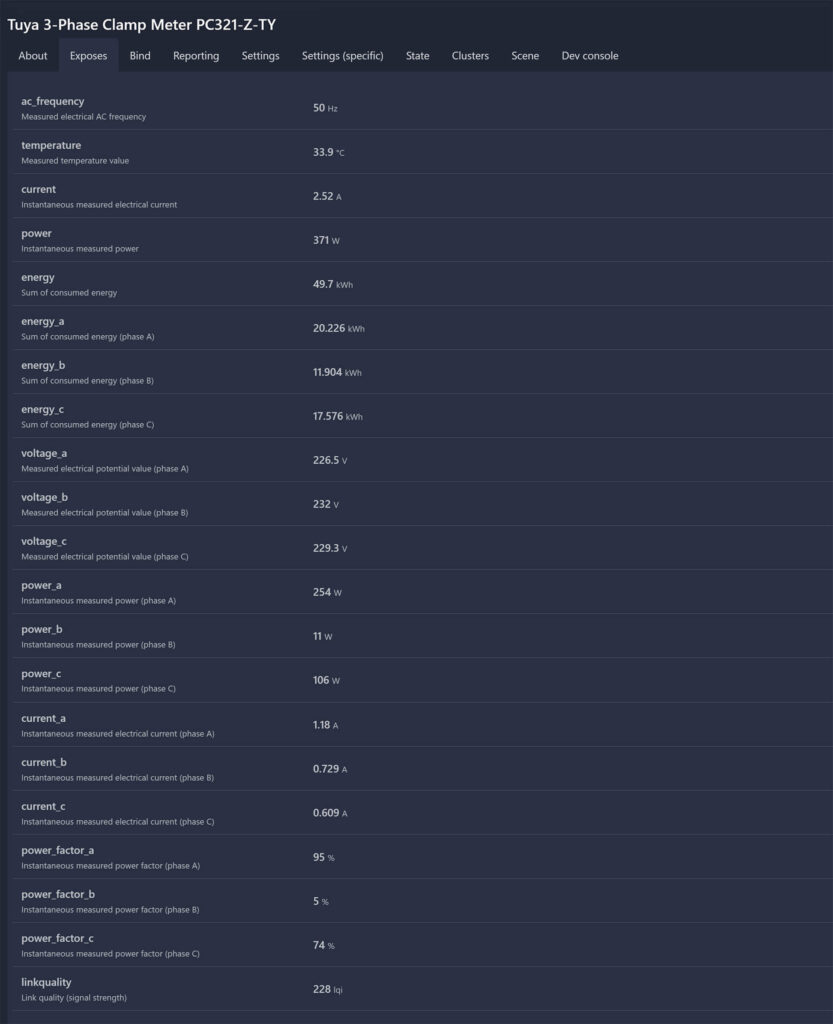
Considering this device measures energy consumption on three phases, it can be a bit overwhelming just looking at the entities in Z2M. What’s going to be useful to you, is the energy sum of all phases (energy entity), individual sums per phase (energy_a, energy_b, energy_c) and possibly the total and individual current (current, current_a, current_b, current_c) for instantaneous power monitoring.
If you find the values to be inaccurate, and have a way of confirming this with a calibrated energy meter, Zigbee2MQTT has a calibration menu under the Settings (Specific) tab for this device:
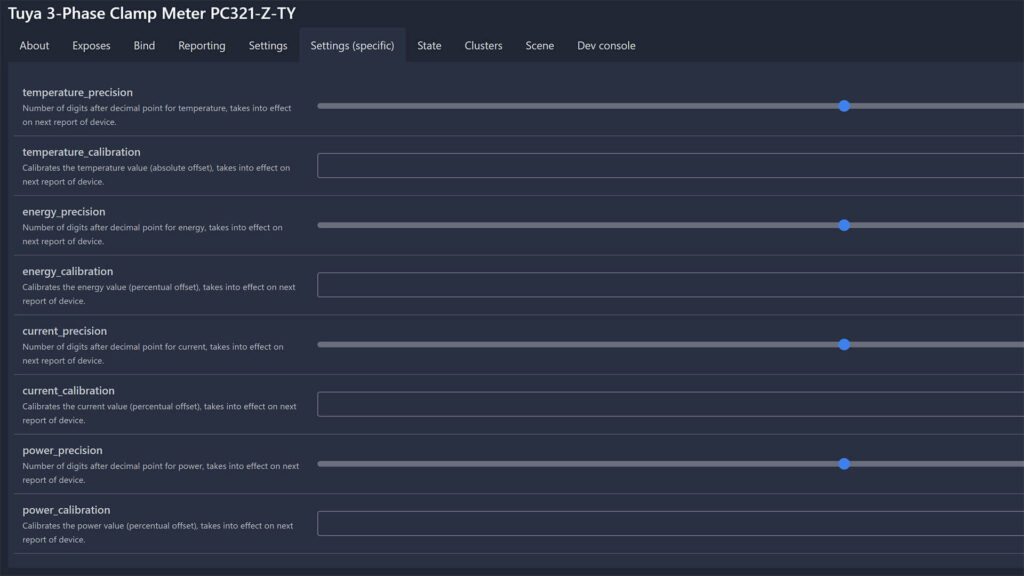
You can calibrate the internal temperature reading of the device, the energy, current and power. You can also set the precision of reported decimals for each one in this menu, if you want to fine tune the reported values.
Measurement
Unlike the single clamp version, which reported it’s measurements in delta values instead of an accumulated value, the 3-Phase version reported the energy sum correctly out of the box. The single clamp version required setting the Retain flag in Zigbee2MQTT and creating a utility meter helper to correctly store the information it provides. No such thing is needed for the PCY321-Z-TY 3-Phase version.
In my setup, it’s been measuring my home energy consumption for almost 1 week without any issues. Some explanation of the stored information:
- The energy total per individual phase remains infinitely in Zigbee2MQTT or until reset
- These are the energy_a, energy_b and energy_c entitites
- The energy total remains infinitely in Zigbee2MQTT or until reset
- Energy entity is the sum of all three separate entities (energy_a, energy_b, energy_c) displayed in kWh
- The current, voltage and power are instantaneous measurements
- They change dynamically to reflect the current energy consumption of your home
- The power factor entities reflect the ratio between the total power and real power that is actually used in your home
To compare the accuracy of the actual measurements, I considered using an industrial voltmeter but eventually decided against it because the one I had measured only instantaneous readings. This would have required me to take multiple measurements and it still would not give me reliable results.
Instead, I compared the total energy sum from the device to the total energy sum of my provider’s current meter for a duration of 5 days:
– Tuya PC321-Z-TY: 110.51kWh
– AC Power Meter: 109.78kWh
The readings show a difference of 0.7%, which is acceptable for a domestic power meter. I intend to completely calibrate the device to a 1:1 ratio, after collecting data for 2 months.
Voltage

Starting with the voltage (V), it can be used to observe for any voltage drops in your home grid connection. This will only be useful if you wired the device properly, by connecting each phase individually. From the chart, you can see my 1st phase has a tendency to drop voltage on several occasions.
If this is severe and frequent, it might be worth reporting to your energy provider.
Current
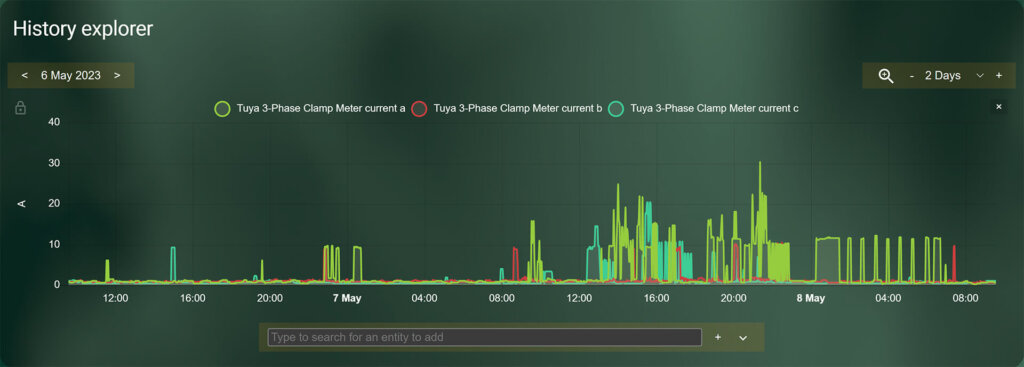
The current (A) is an instantaneous measurement, and can be useful in determining your peak hours of energy consumption. This can help you identify your largest consumers and maybe work on changing your habits (turning them on during cheaper tariffs) or replacing them all together. Old appliances tend to consume more energy that newer ones.
Power
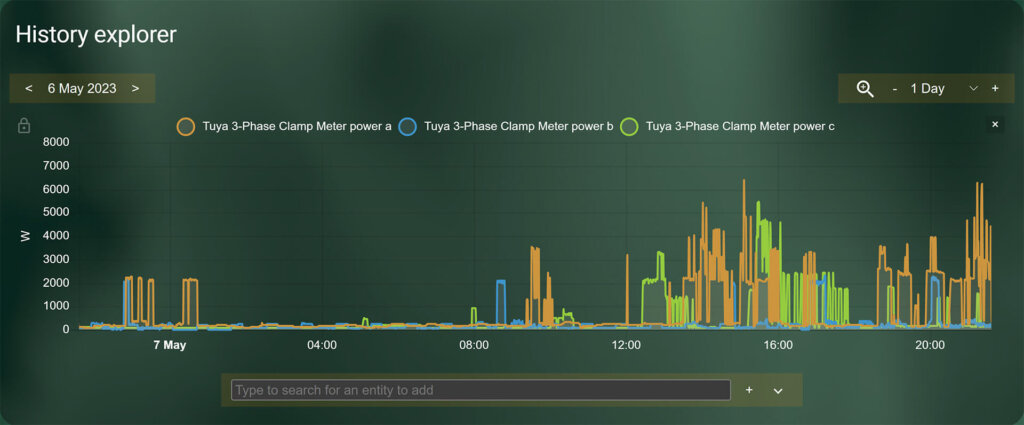
The power (W) is also an instantaneous measurement and can be useful in the same way as the current reading. It simply multiplies your voltage with your amperage to give you a reading in W (watts). Wattage will be more familiar and understandable to most people, as that’s what home appliances are rated in, watts or kilowatts (x1000).
As most of my family is not home during the day, you can see my peaks are in the afternoon and evening hours.
Energy
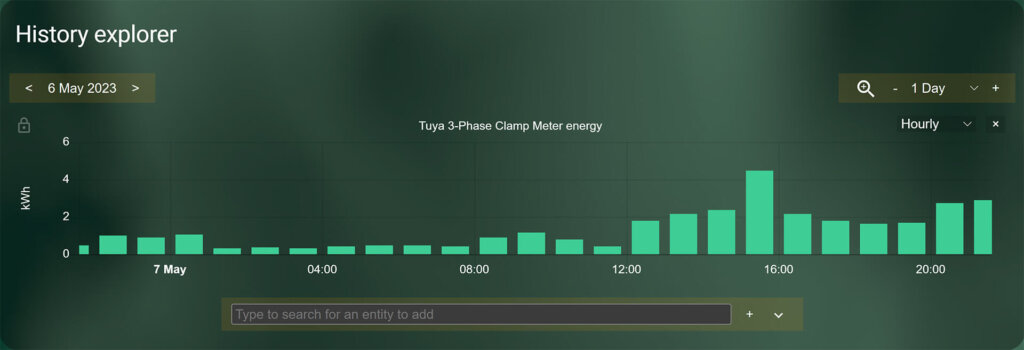
Finally, the energy will be the most important metric for you and monitoring your home consumption. The Tuya 3-Phase Clamp Meter measures the energy as a sum in kWh from all three phases or each phase individually. In the chart above, the energy consumption is showed hourly for the past day.
If you have a general idea of what is connected to each phase going out from your breaker box, Individual phase energy consumption can also be useful in identifying large consumers. Here is a graph showcasing my energy consumption per phase in the last day or so:
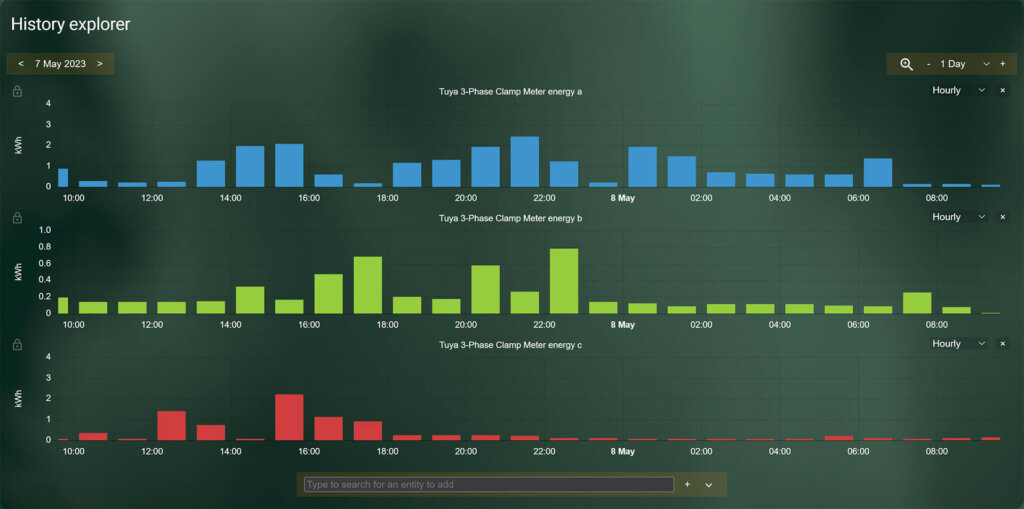
After I added the main energy entity in the energy dashboard in Home Assistant, the data will be stored infinitely and can be sorted by hour, day, week, month, year natively within HA.
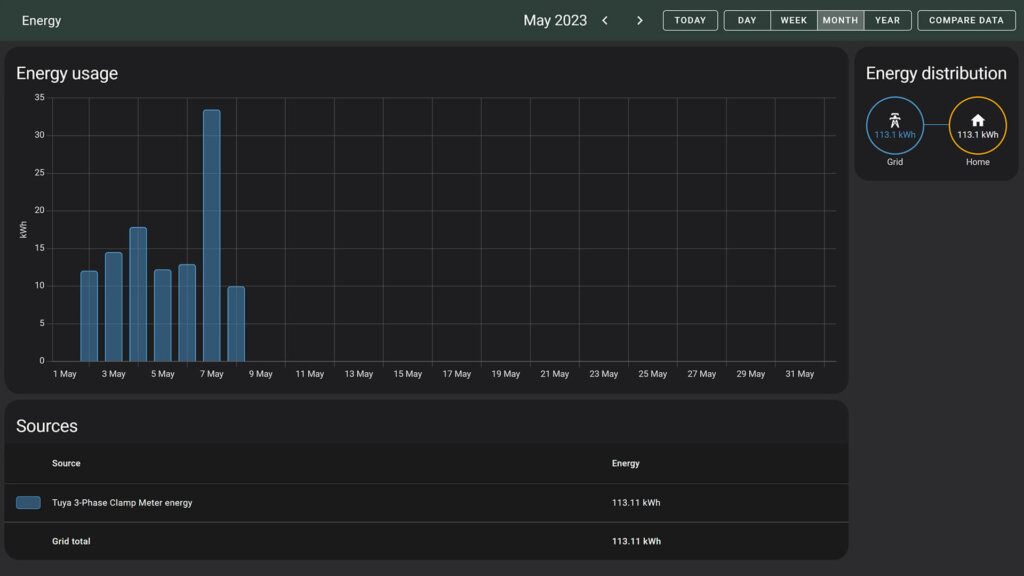
Summary
In all honesty, I did not expect the Tuya 3-Phase Energy Meter PC321-Z-TY to perform it’s function as accurately and reliable like it did. It’s readings were consistent and pushed to Home Assistant via Zigbee2MQTT every ~45 seconds.
Because things can get very hot inside a breaker box, the internal temperature sensor it exposes should be checked from time to time, especially in summer.
Zigbee communication was rock solid, It reported a LQI of 255 thanks to it’s external antenna and my solidified mesh network. I have a bunch of routers deployed in my home as well as a Zigbee repeater and even though the device is outside in the breaker box, it had no problems maintaining a solid connection to my coordinator.
The device is available with clamps up to 500A, so it can be deployed for other use cases like monitoring an industrial production plant or a commercial laundry place with many machines for example. For a standard residential home, 80A clamps are sufficient for 3 phases although exceptions are possible.
Where to buy?
I would recommend this 3-Phase energy meter to anyone looking to monitor their home energy consumption, especially anyone looking for a local, works out-of-the-box solution. In my opinion, it justified it’s price tag. You can get the PC321-Z-TY model on AliExpress and Amazon, here are some links that support this blog directly if you purchase through them:
![]()
AliExpress | AliExpress | AliExpress | AliExpress![]()
United States | Canada | United Kingdom
Germany | Netherlands | Sweden | Spain
France | Italy | Poland | Australia
*If links fail to open, try disabling your AdBlocker.
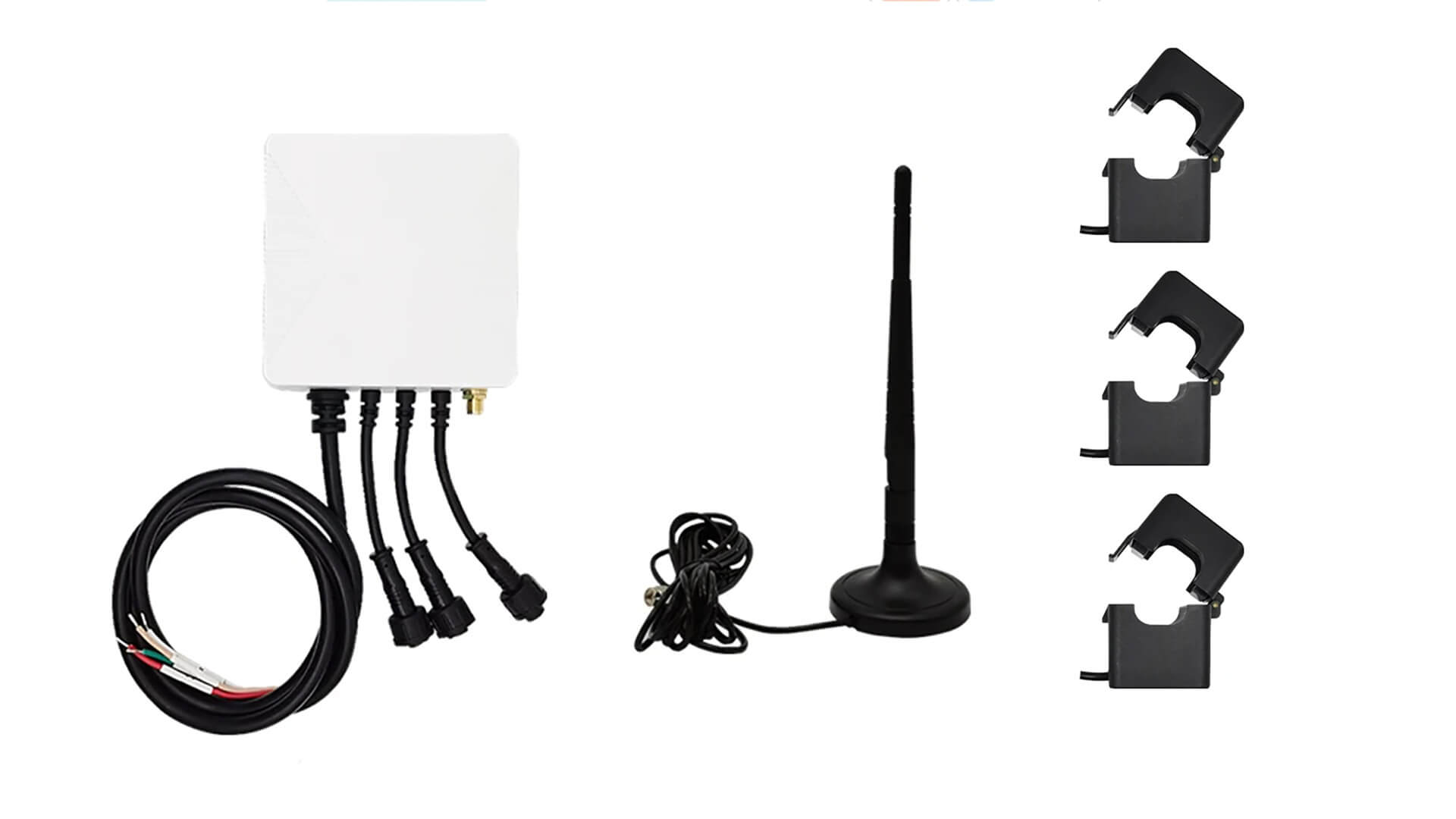
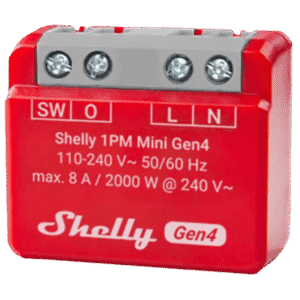
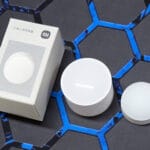
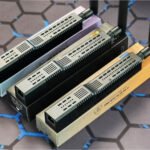






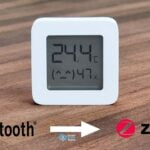
Does this thing support net metering in 3 phase systems? Many providers around the globe use that style of metering.
An example:
let’s assume that for 1 hour on a 3 phase system with solar (single or 3 phase it doesn’t matter)
phase 1 import from grid 1kW
phase 2 import from grid 1kW
phase 3 export to grid 1kW
in net metering you would be charged for 1kWh imported from the grid
Since import and export prices are different simple sum of costs of three phases doesn’t work.
and sumibg the energy used stops working the moment you export more than you use.
The meter would have to have two separate counters: net energt export (incremented when sum of all 3 phases is negative even if some of phases are positive) and net energy import (opposite to the previous one)
Hello,
No, this is not how this device works. It only measures net energy passing through the clamp in one direction i.e. towards the consumer.
Cheers
Hello, if you mount the device between an inverter and the power connection, then the device would have to measure the power of the PV system that is currently being exported to the grid or consumed? Is it possible to set a limit or an alarm in the Smart Life app? For example: charge my electric vehicle when there is 1000 watts of solar power? Thanks very much! M Singer
Yes, it can measure PV current being exported. Although I would suggest using Home Assistant instead of Smart Life.
Hello, thank you for the article. Do you know this this device also supports the 3ph delta connection (this is pretty common in Belgium). This wiring is different from the star distribution system as illustrated in the installation manual in the article, hence the power calculation is also different.
Yes, 3 phase + neutral is the same in my country. So it will work.
Calculation is the same, the CT clamp just measures the current flowing through a phase and uses the input voltage and power factor to calculate the energy
Hi,
I want to use this device to measure the energy consumption of one 3 phase 15 kW stove (6 hotplates). Should I buy 3 phase energy meter or one phase will be enough?
You can use the single clamp model if you do not care for individual consumption of each of the phases.
Otherwise, you need the 3 clamp.
Cheers
Hi,
I have a 3 phase installation without a neutral, can I still use this device?
If it’s possible can I connect the way you explain without the neutral?
Thanks
Hello,
Neutral is not required for measuring the energy consumption, however it IS required for powering on the device.
You will not be able to power it on without neutral, so it is needed.
To be clear, works with 100-240 VAC.
Hi,
Since the clamp measures current flowing through a phase, it is measuring “apparent” current. I presumed it takes the phase different between the measured current and input voltage so as to obtain the power factor. If we tied all 3 voltages to a single phase, the measured power factors from the other 2 phases will be incorrect. Also, is the measured power a real power or apparent power?
Hi,
Any ideas how to run it through ZHA?
No, not really. Developing a custom quirk for an energy meter of this type is a lot of work and not worth my time.